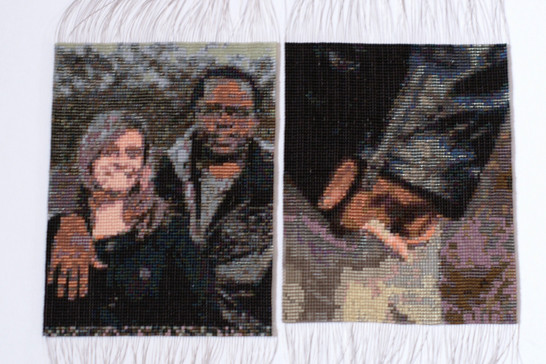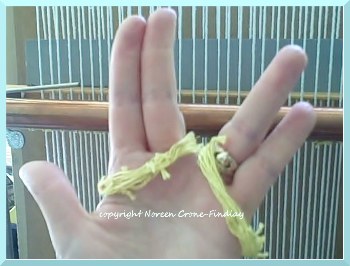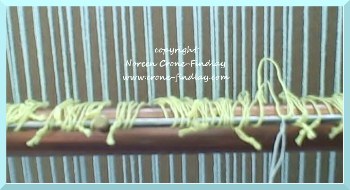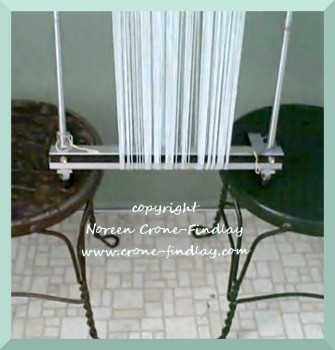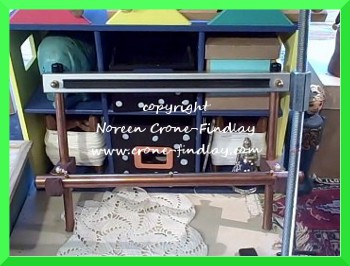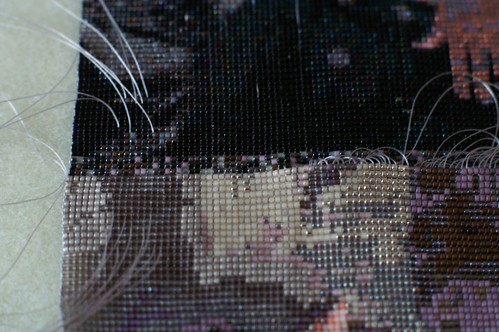
I thought it would be a good technique to show, so here is a video demonstrating how you do the join. The principle is the same as for reweaving warps. I hope the video is clear and it's easy to understand.
It's starting to look good though, so I shall soldier on! Of course I'll have to do this for the warps on the top edges as well. Either that or knot. I have decided I will line the purse, so will think of how to handle the warps along the top edge so I don't have to reweave. Once I'm done with the join (hopefully by Friday night time allowing), I will then be able to go and buy the lining. I want to be able to try it out rather than go with what I think would go well with it.
The other things to consider now are the fringe and the side joins. I'm thinking joining the sides using odd-count peyote. Square stitch could work but I think it would be a little slower to work up. Another option could be to loom two strips and join them on. For the fringe, I have an idea I would like to try for the shape and layout. I'm thinking Swarovksi beads of some sort, though that sounds rather vague!. In any case, the plan is to browse some sites of bead shops and see if I can find something that catches my eye. I'm open to ideas if you want to make any suggestions.
I received all the beads for the Nelson Mandela bracelet except for two. I don't know f I an make a start as yet. I still have to edit the pattern. But hopefully the loom will be wiped by Sunday. There's another portrait I need to work on - its on my large homemade loom. So much to do and so little time!
Good wishes for the rest of the week, and I hope you enjoy(ed) the video!
